DJI Inspire, One year after (2016)
DJI Inspire drone, One year after
You may find online some information about products to be released, product just released, but what about the product released one year ago and how do they hold they promises. This post also hold a lot of tips from my experience.
Here are my thoughts after one year of using as a professional tools the DJI Inspire. This product evolved a lot, mostly its software, from a amazingly powerful designed device to a more family oriented product.
Propellers: During this year, DJI changed 3 time its locking propeller system, so I guess many of the pilot experimented some propeller trouble, it also avoid any unbranded carbon fiber propeller and forced you to stick to the DJI as the shape is quite hard to reproduced by third party. I have no trouble with that. Just make sure it doesn’t get loose after each mounting/dismantle operation. Get plenty of propeller around and don’t get cheap if you feel something is not right; just put a new one!
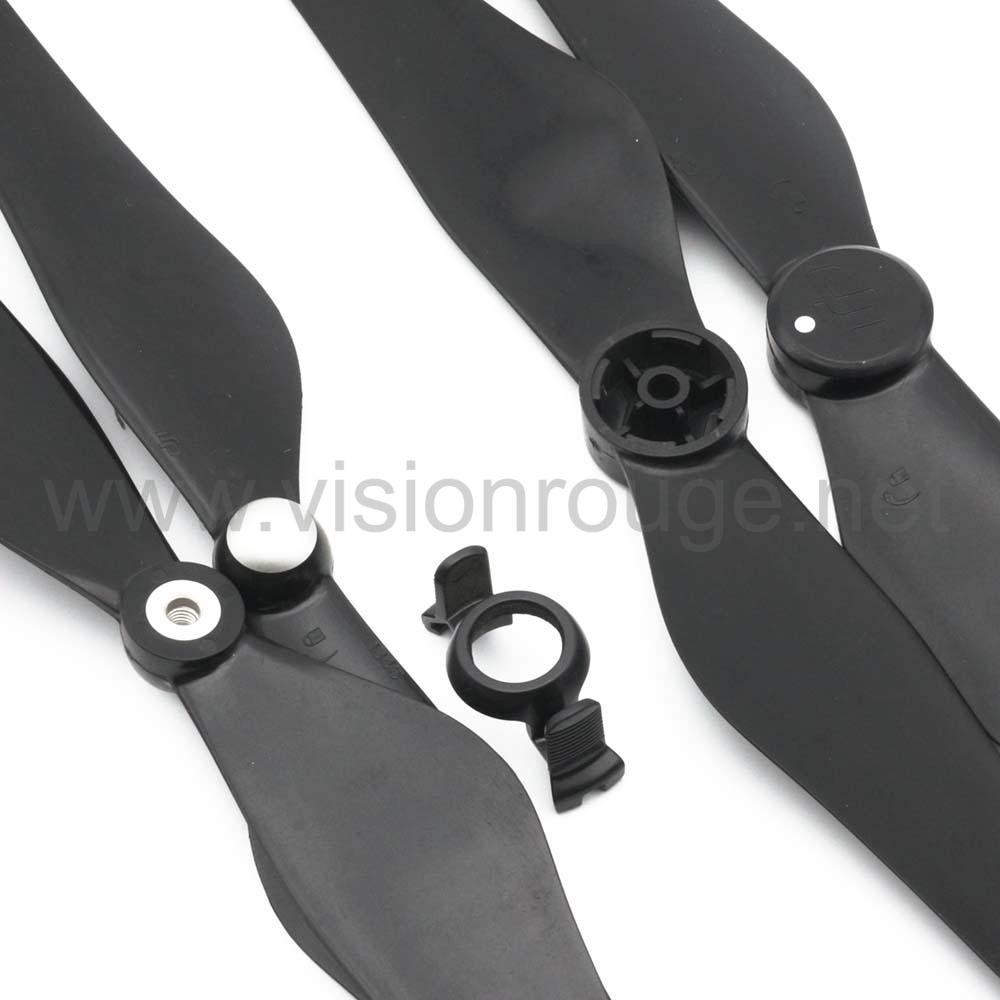
Hardware: You drone will be travelling with you and may even end in your backpack. Be very gentle with it and make a case where it will be secure from any external pressure. I unfortunately discovered that one of the legs was not firmly connected just arriving from a 4 hours flight in a remote location when the airline may have been dropped my very large flight case.
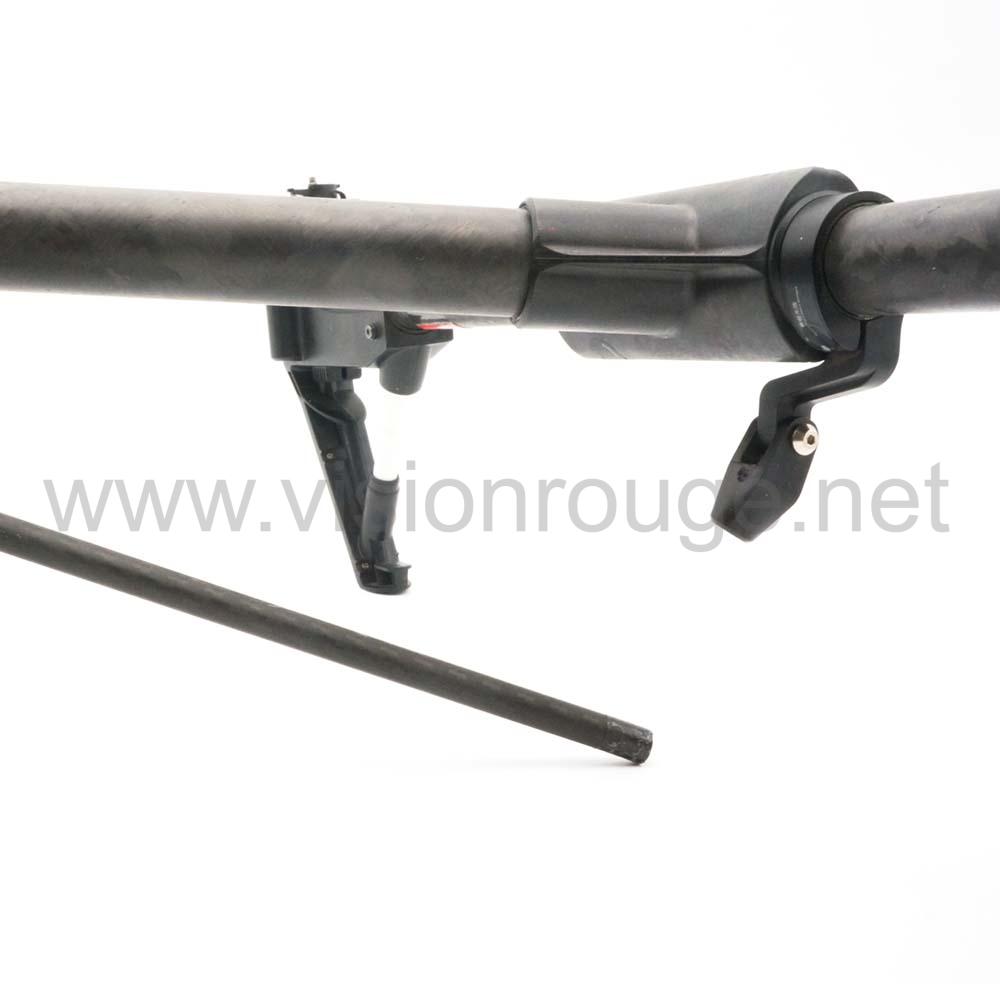
I had few ways to solve this as it was a remote location without almost nothing
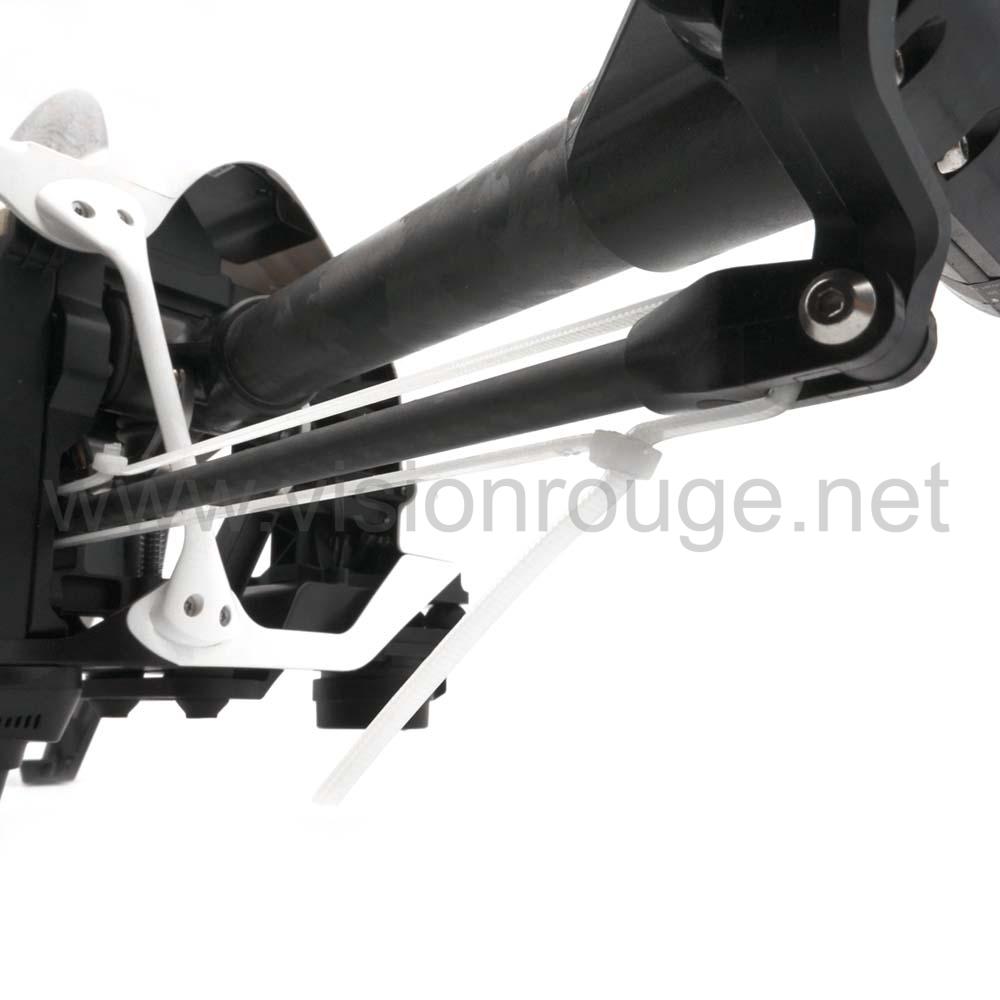
I, later, one glue it back using this 3M double component glue for carbon fiber

Check before flying all the element and make sure nothing is loose. Cancel the flight in doubt and always bring a first air repair kit.
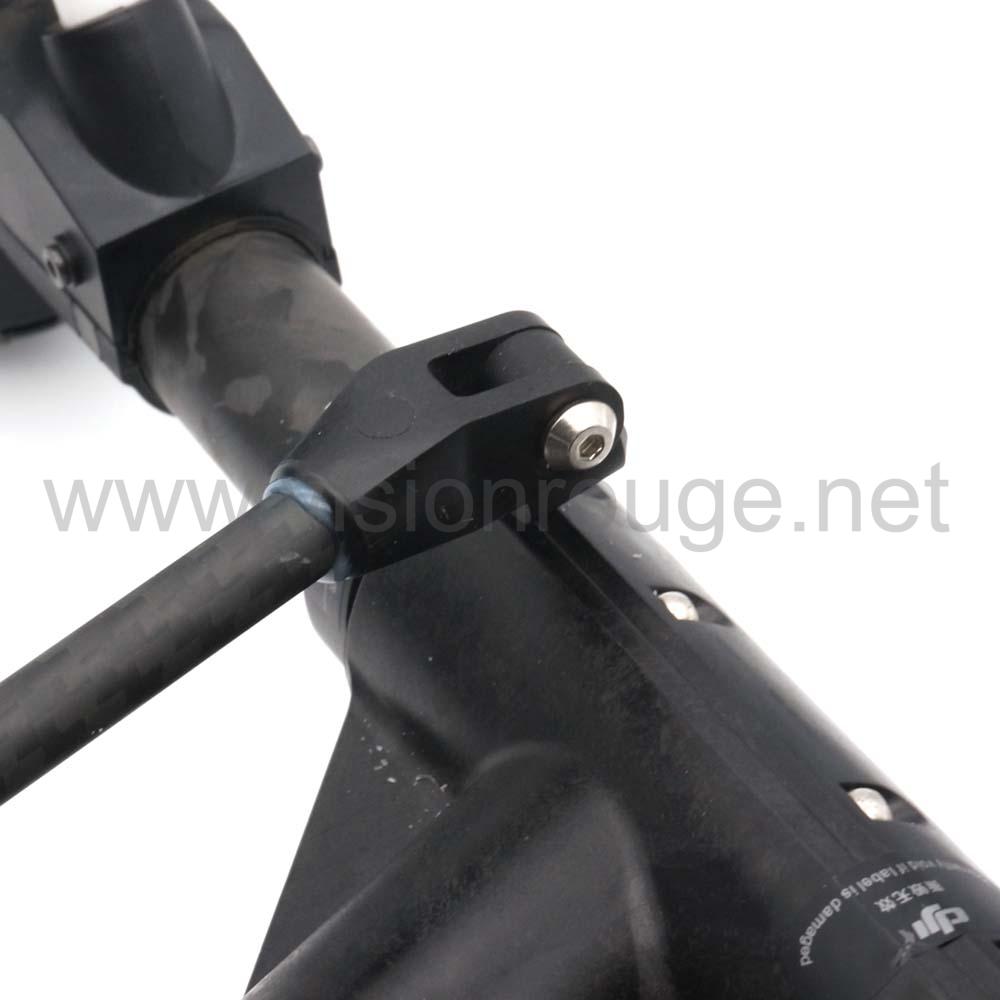
Firmware: DJI clearly released a non tested product at first in Nov. 2014 and the first few months were more a tweaking update to make sure it could just fly. But from the summer 2015, as things getting better, DJI started to restrict now the use of the full capacity of the Inspire. Most noticeable one is the limitation in the power it can deliver and its ability to flight in the wind.
I almost lost a bird once as I wanted to bring it back and a new message popped up saying that the maximum power was reached and so it took forever to come back home. One advice here also, the drone has more power fighting from facing the wind than from the side. At first, I thought it was because of the shape of the drone, but there is so much difference that I think it’s a limitation in the software, read bellow my tips for strong wind. I guess DJI is victim of its success and user are now people without experience that need to be restricted as a simple written notice will not be followed.
Software: Third party tablet are mandatory and I choose the galaxy tab S8 as the size was right and was at the time the brightest tab available (Dec 2014). All was good until the updated released of the “DJI GO app” in Dec 2015. Now the app is draining so much power that I lost 20 % of the battery from the tablet at each flight! I now need to use the “flight mode” on the tablet and also decrease the screen luminosity to get more than 5 flight in a row without getting dark. (you don’t need gps, it’s provided by the remote)
I also have an external battery pack that I plug right away after landing to the tablet to get some precious second. The app is very power hungry and I’m thinking of a backup one to flight in a safer way. I use also a tab dedicated to this task only, without any other software than the DJI app to avoid a bit of power drained. Make the right choice when you are buying your tablet, having an interchangeable battery may be a very nice move. At the time, I’m writing this, when the app is one, you can’t check the tablet battery level, this is something DJI should fix. If the tablet reach a low level, the screen will turn almost black and it will be very hard to bring the bird back home in the blind.
The adds-on you absolutely need.
Sun hood for the tablet: The missing part to be able to read your screen outside. I have designed my own as I can’t find anything fitting my Samsung tab S8. It’s foldable, strong and work perfectly to avoid people looking at your screen which can be annoying sometime.
On your side, be careful to get something which not touch the screen at anytime and press some unwanted function. Test it before you fly.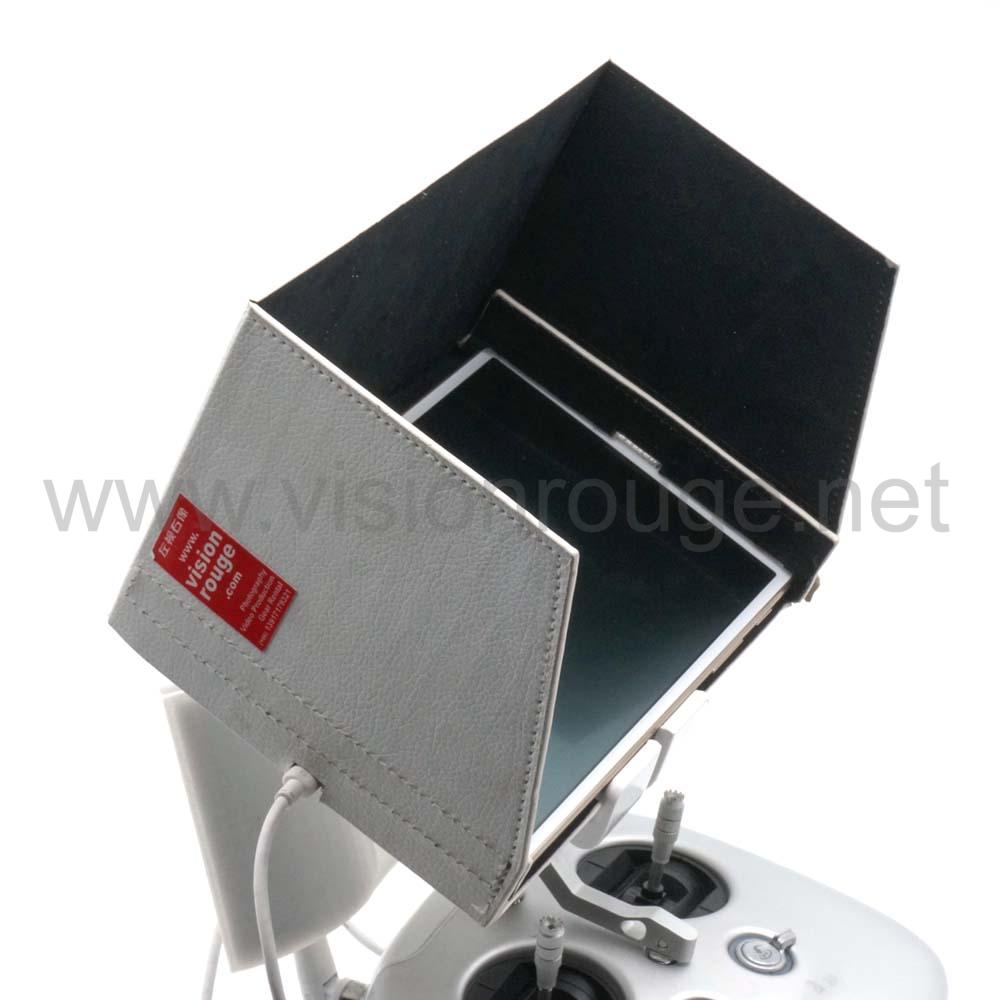
Anti reflective protective layer on your tablet to avoid the reflect of the sky is also a good move.
Antenna reflective booster: The DJI remote have 2 antennas, but each of this antenna is actually 2 antennas in one as well, each face is one system, one for 2.4Ghz and one for 5.8Ghz, one for video, one for flight control and instrumentation. I was surprise at first to get only about one 1Km distance before losing the signal. With this 3D printed simple device, it increase to an extra kilometer before losing the preview.
This is fantastic, it also put the 2 antennas to a very directive and perfectly positioned antenna, getting the best signal available.
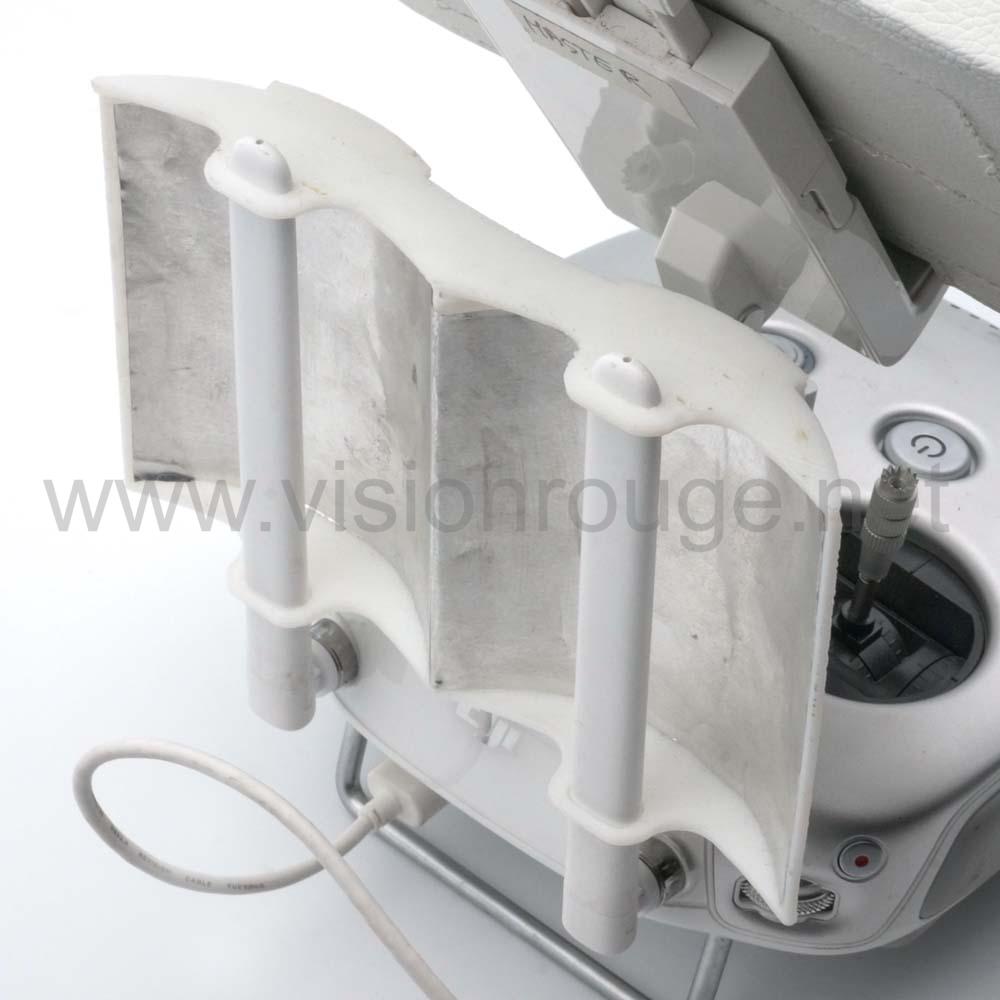
It’s way more directive and you need to have your antenna directed to your bird, but it’s a life saver. Be careful when flying on top of you, you may not be able to move the screen and remote facing the Inspire.
DJI USB extra cable: This is the weak point of your connection, I have tried many usb cable and found that the DJI one are the best, Buy few of them extra. Don’t be cheap, if you lose the connection with the remote, it will be very hard to bring it back.
Things to do as a check list that you may not have thought.
–Dress in black! As the screen is reflective, a black shirt will avoid to be seen on your screen, you can wear a hat with a strap in a windy situation
–Is my lens clean? Some dust or water may have been projected to your camera on your last flight. Check this every time you are ready to take off, it may not be visible on your screen, but will affect all your pictures. Bring a cloth to clean it.
-Avoid to take off from metallic surface, it will clearly impact the navigation system, be aware of concrete where it may be full of metal rod under it. I was flying 1m on top of concrete getting poured and as soon as I went to the area where the concrete was not there, but only the rod, the drone started to act very strangely, taking some altitude solved it.
-Avoid take off from the grass, some water drop may be still around from the morning and the propellers may spread it to your lens, also, it could easily get stuck in the blades.
-Avoid to take off from carpet or smooth material, it will affect your ultra sonic positioning and avoid the automatic deployment of your landing gear. The best is stone pavement area, piece of wood or thick plastic fabric with very large pattern to also help the positioning camera system
-Always check battery level and temperature, do not flight if it’s bellow 15C.
My tips:
-No flight zone and GPS;
At launch, DJI did not included any restriction on where you may be flying, but stupid people doing stupid things forced DJI to change this policy. They first simply stopping people from taking off in a NFZ area based on the drone GPS, later in 2015, DJI decided to let people do it as soon as they are register to their server. Well, I’m not so happy with this either. During all flight, a log is created and sent to DJI as soon as a internet connection is found, linking your gps position, flight path to your email and credit card?!
My way around this is to flight without gps if you know what you are doing and respect the legislation in the area you are located. The gps is located on the top of the bump and can be completely covered with aluminum fold to avoid been tracked by any satellite. Make sure this cover will not be removed by the wind and take all command manually. Test it to make sure it’ working as the drone will immediately automatically land if it found that you are in a NFZ in a middle of the flight!
Do not register you app with your email, do not enter your dji account information.
It’s always a great test to learn how to flight without gps, because, you may need to do it at one point anyways. I was, for example, flying on top of a river in a very narrow valley and I did not have any gps signal there.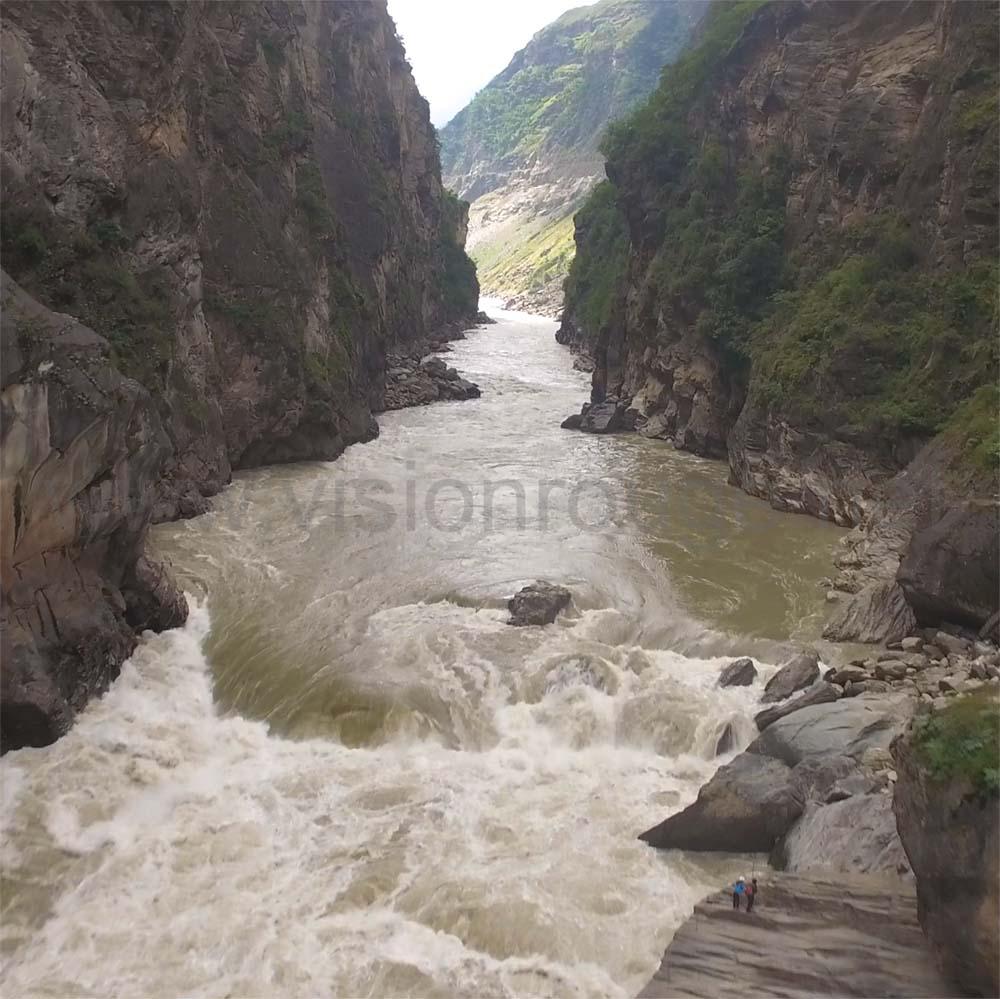 Without GPS, your drone will be only following the existing weather condition and will not hold his position. So in windy areas, will be way harder to keep a steady position.
Without GPS, your drone will be only following the existing weather condition and will not hold his position. So in windy areas, will be way harder to keep a steady position.
-Strong wind;
According to the latest Inspire specifications, it can’t flight anymore with a slight wind, I guess it’s to protect themselves that they wrote like this. If you need to go anyway and know what you are doing, make sure you will have enough power to bring back home. it will use way more power to flight against the wind. You can also lowered your altitude as the wind may be slower. But the main idea is to have the nose of the bird facing the wind if you need to go to one point to another, do note flight sideways, it’s have way less power like this.
– Cold weather;
I have flight from -10C as maximum, I can only speak from this experience.
-Let the bird cooling down first. Do not open its case and flight right away, the rapid changing of temperature will impact the navigation system. Let it on the landing area for 10 mn minimum to get all ready. Put it under the sun if it’s a sunny day to let it have the same temperature than during flight. High altitude with wind may actually be colder than on the ground, be very cautious about this.
-Let the batteries warm up before installing them inside the bird. I have the DJI battery warmer from DJI, but it didn’t work that well, it uses some power and did not heat enough to be safe. Instead, I bought some heating body pack, not the one you put on your hands as they are too warm, but the one you stick to your body.
Keep all battery in a bags and drop 2 or 3 of these 1 hour before flying. They last 10 hours! Make sure it will touch the black part of the battery, the white top contain the temperature measuring system and may not reflect the true temperature of the battery itself. I have a friend using electric blanket also, but that means that you have power on the take off area which is not always the case.
-Put the battery in place, take off and over for 2 mn, not one, but 2 minutes and be gentle on the sticks.
You can check the temperature and see how it slowly increase just by hovering. A cold battery will be drained faster if a large amount of power is requested, avoid also flying in a windy area. This loss of power is permanent and a battery used this way will never recover and get its full charge again.
Now, the DJI firmware do not allows you to start a battery below 15C, you can bypass this by heating with some air from your mouth on the power button. The sensor is on the top cover, not inside the battery. But be aware that it’s not something recommended at all. (I use it to take off at 14C and hover until it says 20C).
Flight first by getting altitude slowly and move to you location after reaching the desired altitude, if something happen, a least, you will know where it is. Also check the batteries level and the color of the bars, if it’s becoming yellow, stop ascending, stay static for 30 seconds and wait for the green to be back.
I have to say that from-10 till 0, I saw so many error messages that I can’t list them all here (one even saying, please contact DJI support, unknown error). Temperatures hotter than 0 C seems really improve the navigation system. If one of these message pops up, land immediately, do not try to be smarter than DJI engineer. Land, remove all batteries, and reboot all until all is fine, don’t forget the 2 minutes hovering time where you can also check the noise from the propeller and detect any speed variation. I know it’s frustrating to lose time this way, but nothing compare to losing your bird and hurting somebody.
I also tried the DJI warm stickers but found it white useless as you need to put each of them to each battery and remove it if the weather getting better. I have designed this cage instead and it’s working amazing. The tape is a professional masking tape, Be sure that it will stick to the Inspire body; You don’t want this to be in the middle of the propellers during flight.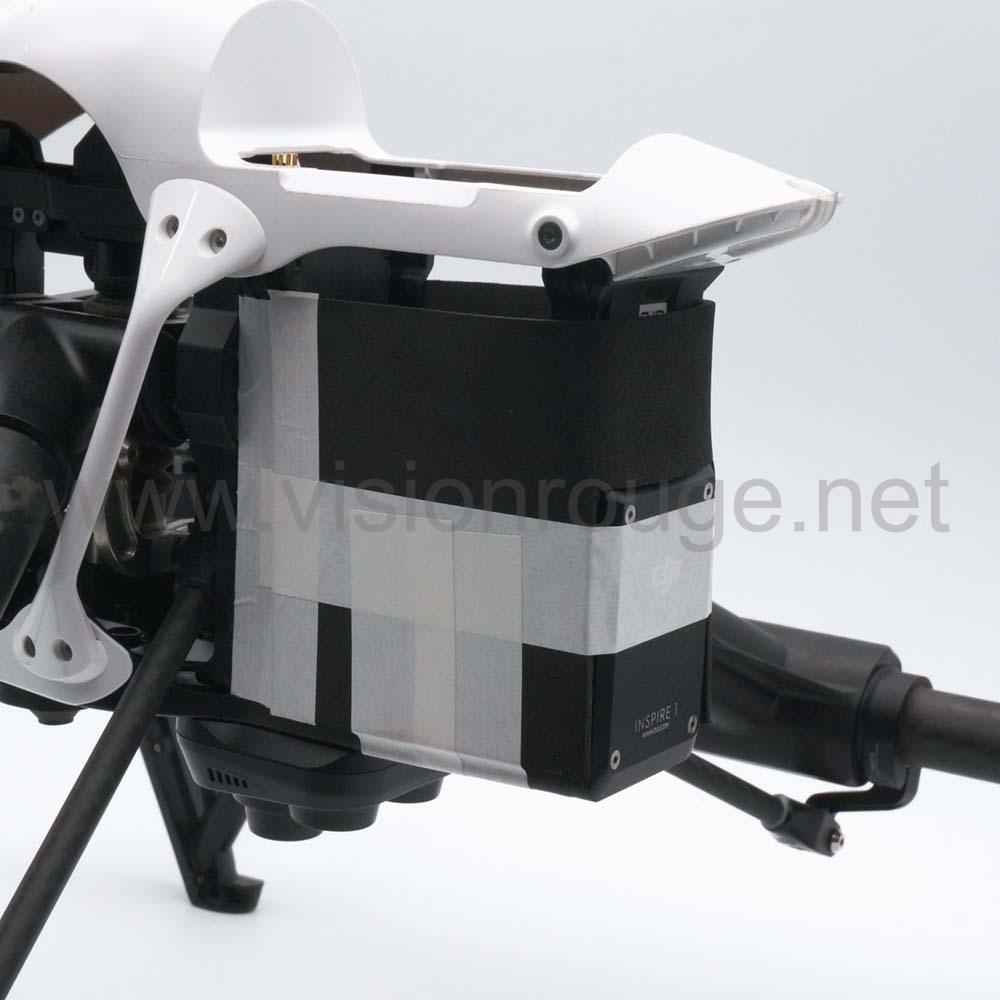 The foam is 1mm thick and is similar to the sticker material DJI provide.
The foam is 1mm thick and is similar to the sticker material DJI provide. 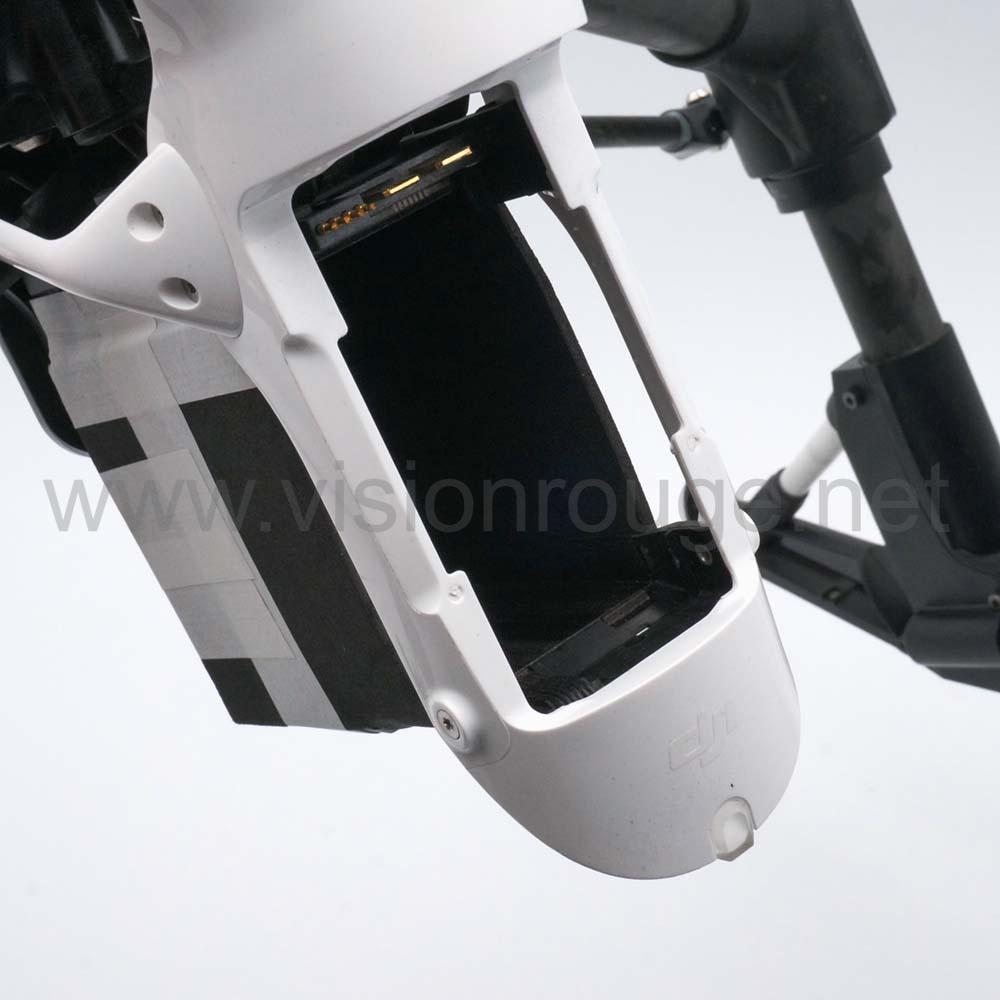
Spend some time for the design, don’t rush it. Remove it when you are flying in a right weather, you don’t want the batteries to overheat later on. Again, check and check the battery temperature, it’s almost as important as the battery level! If you drain more power, temperature will increase, not something you want to get out of limit, 40C is my limit!
Dual operator setup;
A special remark here about using the second receiver as video check: I don’t know why, but the second remote always got a weaker signal than the master one. It’s better to get the two operator linked with the master remote than using the HDMI output from the slave remote.
Best practice is so to get the usb and tablet plugged on the master for the drone pilot. And the slave remote used for controlling the gimbal, but the preview monitor in HDMI should be plugged to the master, not the slave. (make sure you activate both output on the master remote)
What if? The sentence you should ask yourself at any moment.
I have been flying different setup, from Mikrokopter, DJI phantom 1,2 and now the Inspire. On my experience, be prepare for anything, it’s not because you flew 10 time without any trouble than the next one will be fine.
One constant trouble I had with DJI is a inverted remote situation, here are the conditions I trigger it.
-With Phantom one, Flight full speed and suddenly stop. All the remote was inverted, left was right, right was left, up was up, but turn clockwise was also reversed. hopefully, I still have view on my bird and was able to bring it back home.Always be gentle on the stick on every flight, even if someone asked me ” how fast can it goes?”
-With Phantom Two, after 2 or 2 perfect flight, I changed the battery but quickly turn it on and off by miss pressing the buttons. All seems fine to start the engine, but again, all other command where reversed. I grab the drone with my hand as it was ready to hit the wall. Always hover a bit before flying and check all remote commands.
-With Inspire one. After 2 successful flights, I took off again with a new battery pack; In the middle of the flight, I suddenly notice that I can’t control anything anymore. It was flying straight without receiving any order from the stick. I first try to trigger the return home button, but nothing changed. I can still see the feed and the gps map, but It was going away. At this time, it was 1.7 Km from me in a valley. Altitude was 0 m as I took off from a cliff. Second test was to disconnect the usb cable from the tablet and plug it back. The screen shows briefly a not connected message and give me back my feed, but still going away from me. It was a nice place for my drone to die.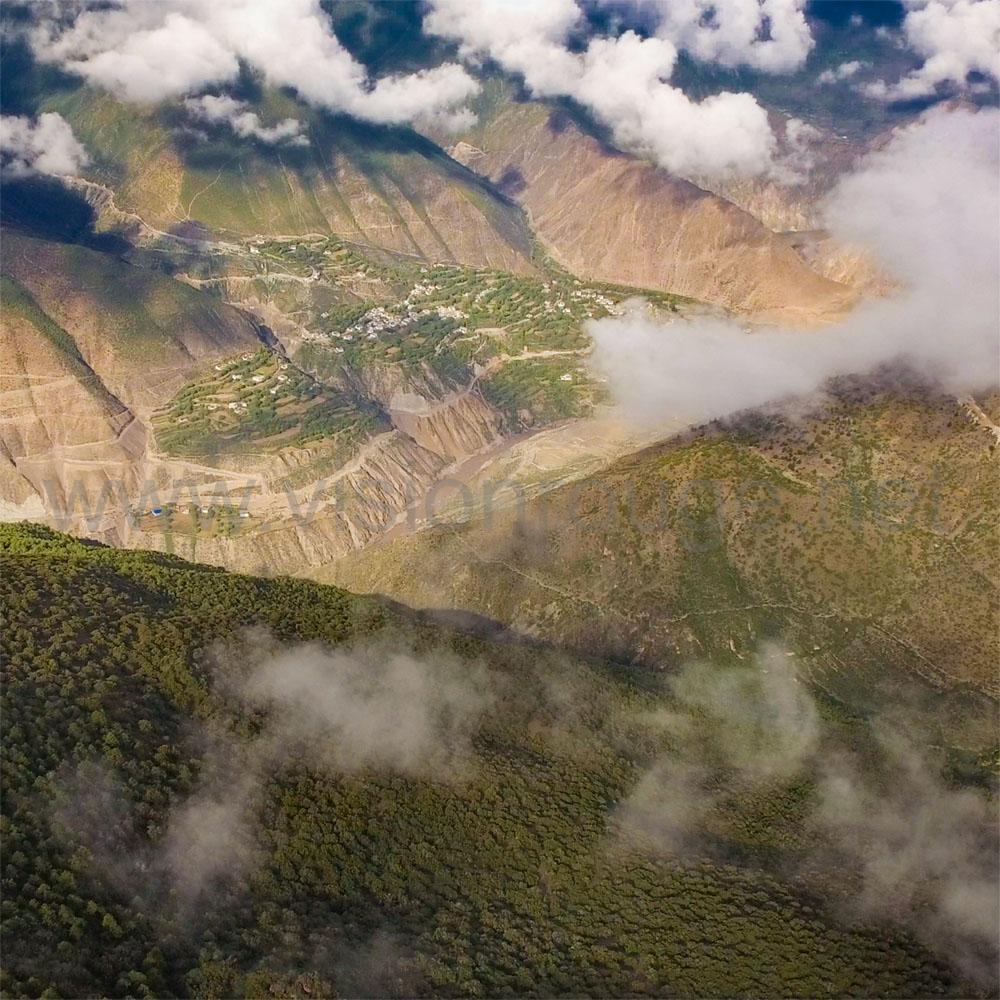
Last attempt, was to turn off the remote controller, knowing that it was my last choice to trigger the return home order. I turn it off for 20 long second and turn it on again. This time it worked and the drone was back to me. Hopefully, I had put the return home option in case of signal loss. Put a right flying altitude failsafe back home, you may need it!
Always be prepare, get extra safety on time and battery power, don’t push the limit, you may be luck once, but not twice! Learn from others, spend time on reading past experience.
Overall, The Inspire is still a great piece of gear, I’m waiting for the version 3.0!
